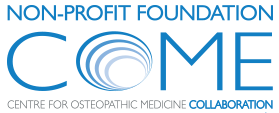Effect of Osteopathic Manipulative Treatment vs Sham Treatment on Activity Limitations in Patients With Nonspecific Subacute and Chronic Low Back Pain
Importance Osteopathic manipulative treatment (OMT) is frequently offered to people with nonspecific low back pain (LBP) but never compared with sham OMT for reducing LBP-specific activity limitations.
Objective To compare the efficacy of standard OMT vs sham OMT for reducing LBP-specific activity limitations at 3 months in persons with nonspecific subacute or chronic LBP.
Design, Setting, and Participants This prospective, parallel-group, single-blind, single-center, sham-controlled randomized clinical trial recruited participants with nonspecific subacute or chronic LBP from a tertiary care center in France starting February 17, 2014, with follow-up completed on October 23, 2017. Participants were randomly allocated to interventions in a 1:1 ratio. Data were analyzed from March 22, 2018, to December 5, 2018.
Interventions Six sessions (1 every 2 weeks) of standard OMT or sham OMT delivered by nonphysician, nonphysiotherapist osteopathic practitioners.
Main Outcomes and Measures The primary end point was mean reduction in LBP-specific activity limitations at 3 months as measured by the self-administered Quebec Back Pain Disability Index (score range, 0-100). Secondary outcomes were mean reduction in LBP-specific activity limitations; mean changes in pain and health-related quality of life; number and duration of sick leaves, as well as number of LBP episodes at 12 months; and consumption of analgesics and nonsteroidal anti-inflammatory drugs at 3 and 12 months. Adverse events were self-reported at 3, 6, and 12 months.
Results Overall, 200 participants were randomly allocated to standard OMT and 200 to sham OMT, with 197 analyzed in each group; the median (range) age at inclusion was 49.8 (40.7-55.8) years, 235 of 394 (59.6%) participants were women, and 359 of 393 (91.3%) were currently working. The mean (SD) duration of the current LBP episode was 7.5 (14.2) months. Overall, 164 (83.2%) patients in the standard OMT group and 159 (80.7%) patients in the sham OMT group had the primary outcome data available at 3 months. The mean (SD) Quebec Back Pain Disability Index scores for the standard OMT group were 31.5 (14.1) at baseline and 25.3 (15.3) at 3 months, and in the sham OMT group were 27.2 (14.8) at baseline and 26.1 (15.1) at 3 months. The mean reduction in LBP-specific activity limitations at 3 months was −4.7 (95% CI, −6.6 to −2.8) and −1.3 (95% CI, −3.3 to 0.6) for the standard OMT and sham OMT groups, respectively (mean difference, −3.4; 95% CI, −6.0 to −0.7; P = .01). At 12 months, the mean difference in mean reduction in LBP-specific activity limitations was −4.3 (95% CI, −7.6 to −1.0; P = .01), and at 3 and 12 months, the mean difference in mean reduction in pain was −1.0 (95% CI, −5.5 to 3.5; P = .66) and −2.0 (95% CI, −7.2 to 3.3; P = .47), respectively. There were no statistically significant differences in other secondary outcomes. Four and 8 serious adverse events were self-reported in the standard OMT and sham OMT groups, respectively, though none was considered related to OMT.







